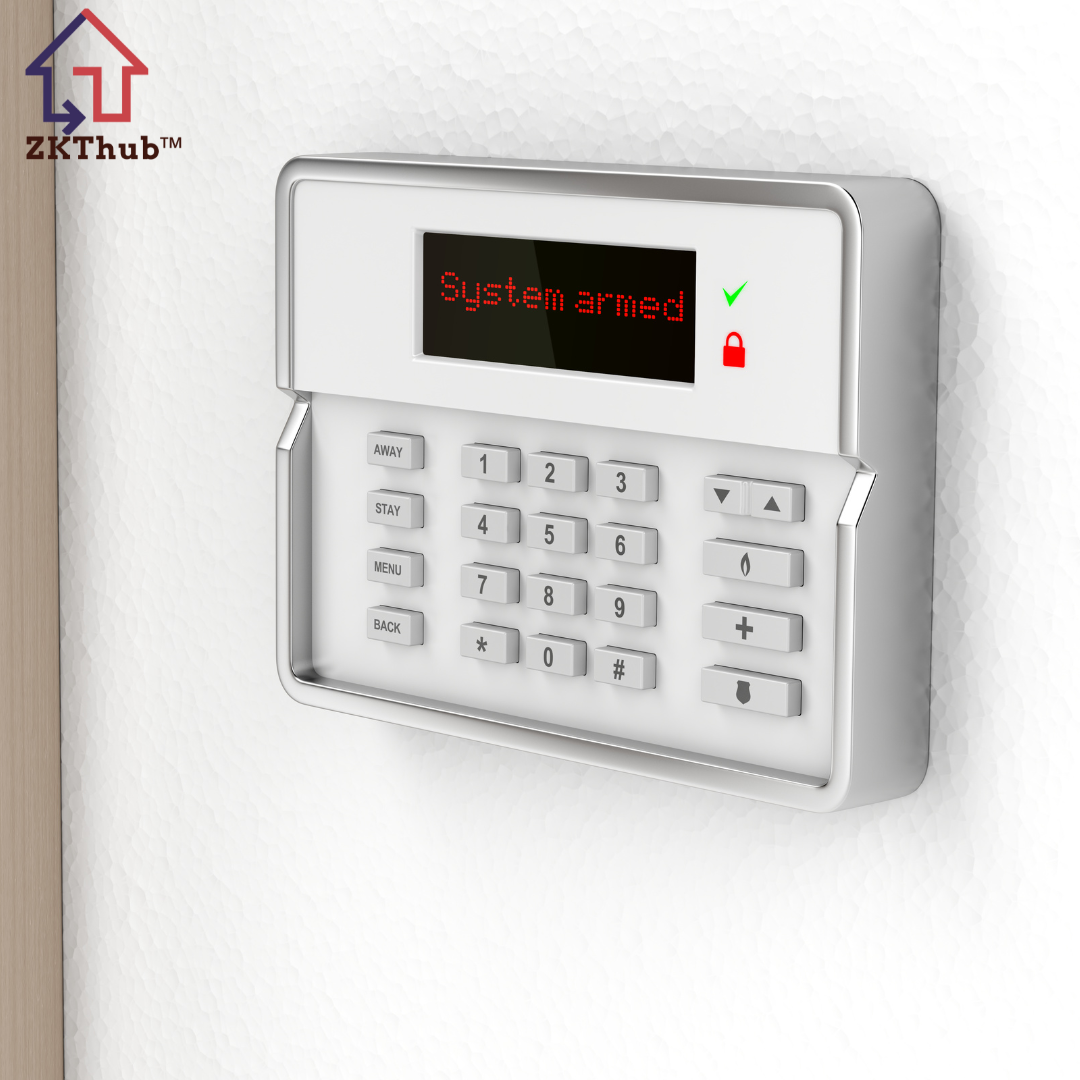Address
Shop No - 4, Near Kodathi Panchayath Office, Kodathi Village, Carmelaram Post, Ambalipura - Sarjapur Road, Bengaluru - 560035Call Us
093802 15771
Burgular / Intruder Alarm
Get complete peace of mind that your home protected 24/7!
A burglar or intruder alarm is a critical component of modern security systems designed to protect homes, businesses, and properties from unauthorized entry and theft. These systems consist of various sensors, control panels, and alert mechanisms that work together to detect and respond to potential security breaches.
Components and Functionality:
- Sensors: The primary components of a burglar alarm system are sensors. These include door and window sensors, motion detectors, glass break detectors, and vibration sensors. Door and window sensors detect when these entry points are opened or tampered with, while motion detectors identify movement within a designated area. Glass break detectors sense the sound of breaking glass, and vibration sensors can detect physical tampering with windows or doors.
- Control Panel: The control panel is the system’s brain, connecting all the sensors and managing their signals. It processes inputs from the sensors and, if an intrusion is detected, triggers the alarm. Modern control panels are often connected to the internet, allowing for remote monitoring and control via smartphones or other devices.
- Alarms and Alerts: When a sensor is triggered, the control panel activates the alarm system. This usually includes loud sirens and flashing lights to scare off intruders and alert occupants and neighbors. Additionally, many systems send notifications to the property owner or a monitoring service, which can then contact emergency services if needed.
Benefits:
- Deterrence: The presence of a visible alarm system can deter potential intruders from attempting a break-in, as the risk of detection and apprehension is higher.
- Immediate Response: Burglar alarms provide an immediate alert to occupants and monitoring services, enabling quick action to prevent theft or damage.
- Peace of Mind: Knowing that a burglar alarm system is in place provides peace of mind to property owners, whether they are at home, at work, or on vacation.
Advanced Features:
Modern burglar alarm systems often come with advanced features such as wireless connectivity, integration with smart home systems, and compatibility with other security devices like surveillance cameras. These features enhance the system’s effectiveness and provide comprehensive security coverage.

What is Burgular / Intruder Alarm?
A burglar or intruder alarm is a security system designed to detect unauthorized entry into a building or area and alert occupants or authorities. These systems typically include a variety of sensors, such as door and window sensors, motion detectors, and glass break detectors, which monitor potential points of entry and movement within a property. When an intrusion is detected, the system triggers alarms—such as loud sirens and flashing lights—to deter the intruder and alert the occupants.
- Crime prevention
- Industrial processes
- Traffic monitoring
- Transport safety
- Sporting events
- Monitor Employees
- Institutions
- Criminal use
- Home security
Additionally, many modern systems can send notifications to the property owner or a monitoring service, which can then contact emergency services if needed. These alarms enhance security, providing peace of mind by protecting homes, businesses, and other properties from theft and unauthorized access.

Details of Accessories
Accessories for a burglar or intruder alarm system are crucial in enhancing its functionality, reliability, and effectiveness. Here are some key accessories:
- Door and Window Sensors: These sensors detect when a door or window is opened or tampered with, triggering the alarm. They are essential for monitoring entry points.
- Motion Detectors: These devices sense movement within a specified area. They are commonly used in large spaces like living rooms, hallways, and commercial areas to detect intruders.
- Glass Break Detectors: These sensors detect the sound of breaking glass, providing an added layer of security for windows and glass doors.
- Vibration Sensors: These detect physical tampering or vibrations, often used on windows and doors to sense attempts to break in.
- Control Panels: The central hub that connects all sensors and devices, processing signals and managing the system. Modern control panels often feature touchscreens and can be connected to mobile apps for remote control.
- Keypads: Used to arm and disarm the alarm system. They can be installed at entry points for easy access.
- Sirens and Alarms: Loud sirens and flashing lights that activate when an intrusion is detected, deterring intruders and alerting occupants and neighbors.
- Remote Controls and Key Fobs: Allow users to arm and disarm the system remotely, providing convenience and flexibility.
- Cameras: Surveillance cameras that integrate with the alarm system to provide visual monitoring and recording of activities.
- Smartphone Apps: Mobile applications that allow users to control the alarm system, receive notifications, and monitor their property remotely.
- Panic Buttons: Devices that can be pressed to immediately trigger the alarm in case of an emergency, providing an instant alert to monitoring services and authorities.
- Smoke and Heat Detectors: These integrate with the alarm system to provide fire detection, enhancing overall safety.
- Flood Sensors: Detect water leaks or flooding, offering protection against water damage in addition to security against intruders.
- Backup Batteries: Ensure that the alarm system remains operational during power outages, maintaining security at all times.
- Signal Repeaters: Extend the range of wireless components, ensuring reliable communication throughout larger properties.
These accessories collectively enhance the functionality and effectiveness of a burglar or intruder alarm system, providing comprehensive security and peace of mind.
